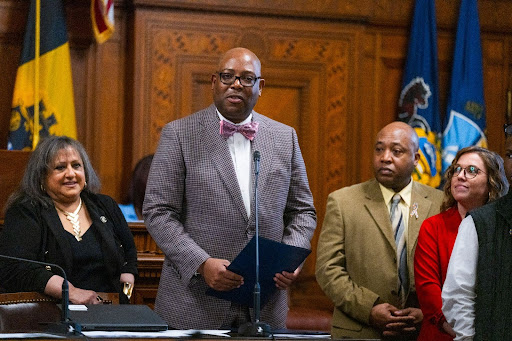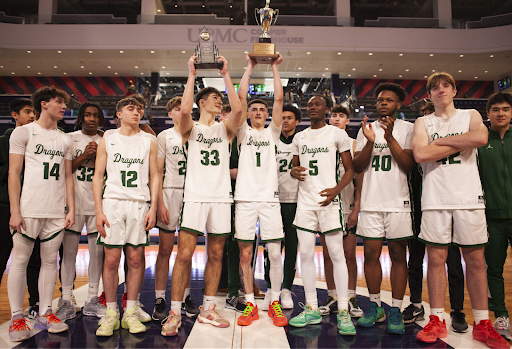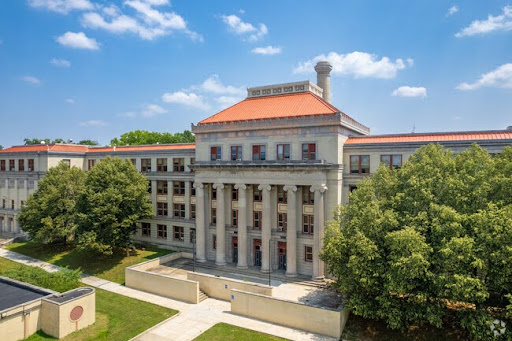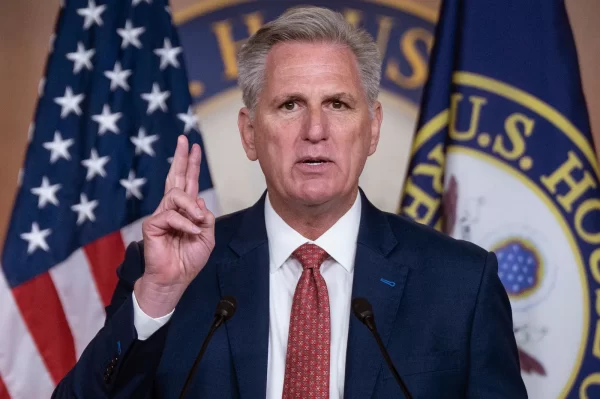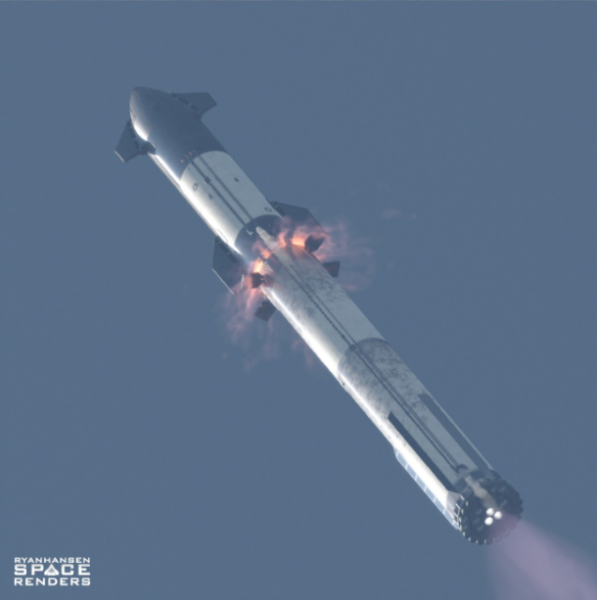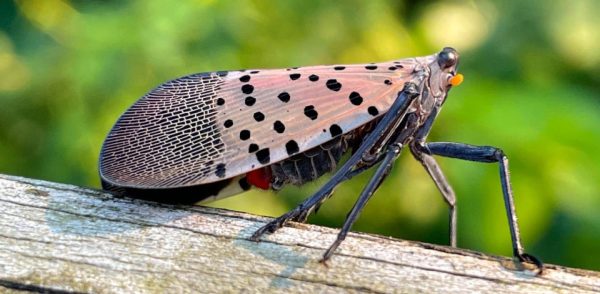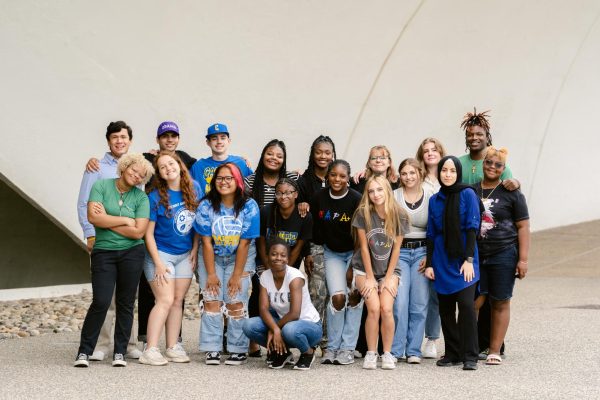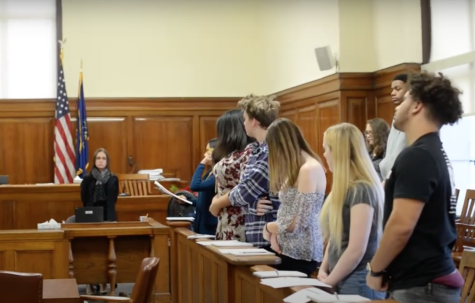Pittsburgh’s First Major Stadium
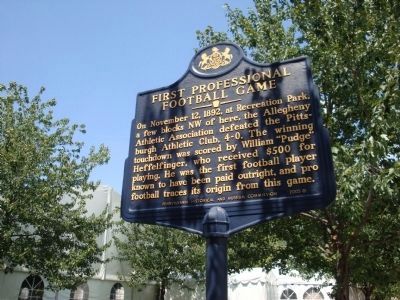
The historical marker for Recreation/Union park lists it as the site of the First Professional Football Game. Credit: Mark Wintermantel Historical Marker Database
In July, the Steelers announced that they had reached a naming rights deal with Acrisure, a Michigan insurance company, and that Heinz Field would be known as Acrisure Stadium. This news was not well received by many Pittsburgh sports fans, but in some ways, mirrored an event that happened nearly 140 years earlier, just a few blocks away.
On a plot of land situated in Allegheny City, now part of Pittsburgh’s North Side, the Union Park stood. Built in 1865 for use as a skating center, the Philadelphia Athletic Base Ball Club paid a visit to the region that same year playing games against local teams, at a nearby park. This increased excitement for baseball in the region, and likely influenced the decision to convert Union Park into a baseball field in 1867. Soon Union Park became the home of Pittsburgh’s first major professional baseball team. The team’s owner, Denny McKnight, would soon become a key player in the history of Union Park and the early history of professional baseball.
McKnight came from a very influential family in the area. His father was a Pittsburgh City Councilman, and a US Congressman, and his family were very influential in the area. Using his influence, McKnight helped found the American Association, an upstart baseball league. Upon its founding in 1882, the league had six members, five of which evolved into current MLB franchises, in which Mcknight was the president of Pittsburgh’s team, The Alleghenys. After two seasons playing at nearby Exposition Park, the Alleghenys would move to Union Park in 1884.
Shortly after the Alleghenys first season in the park, the Allegheny Baseball Club decided to change the name of the park. Unlike Heinz Field, now known as Acrisure Stadium however, the name change was not a swap between two large brands. The park was renamed from Union Park to Recreation Park in 1885.
While this news was not as viral as the Acrisure news, only making the sixth page of that day’s paper, it likely marked a bigger change in Pittsburgh sports and civic history. With the news of the name change, came a shift in the use of Recreation park. While it would still be used for baseball, and recreational skating, its uses expanded to hosting concerts, with arrangements for a stage that could easily be reconstructed, and deconstructed when needed. The broadening of Recreation Park’s use would soon play a key role in many events to come in its short history
Although the Alleghenys were not particularly successful during their first three seasons at Recreation Park, with their best finish being an 80-57-3 season in 1886, their tenure at the park led to their invitation to the National League, where they still are today. While McKnight’s American Association folded in 1891, the American Association did make some notable changes to the baseball landscape.
American Association games cost 25 cents, unlike the National League where games cost 50 cents. They also played games on Sundays, which the National League did not. These differences made the American Association a more fan-friendly league. Although the league would completely disband in 1891, many of their teams were able to jump ship to the National League before then. The Alleghenys were one of the first teams to do this, joining in 1887, banking off their relatively successful 1886 season. The National League was able to implement some of the American Association’s popular policies including Sunday games, 25 cent tickets, and alcohol at stadiums. The Alleghenys time in the American Association and Recreation Park led them to find their home in the National League, where the franchise, now the Pittsburgh Pirates, has been competing ever since.
After the Pirates’ departure, the stadium would then play host to the Pittsburgh Keystones, of the National Coloured League (LCBP), an African American pro baseball league that would only last for the 1887 season. Although this league only lasted one season, it was significant to the history of black baseball. Jerry Mallory once wrote “For, not only did the Colored League launch several notable careers, most significantly that of the Keystones’ Sol White, it also accomplished something that even the formidable Foster could barely even hope to dream: it was accepted, if not exactly embraced, by the exalted polity of the National Agreement,”
Sol White was only 19 at the time of his pro debut in the LCBP. He would later become a major player in the early history of black baseball, as a coach, player, and historian and was inducted into the baseball hall of fame in 2006.
Five years later, a major event in American Football history would take place at Recreation Park. After pro baseball left the park, American Football became a popular sport in the park. On November 12 1882, two previously amateur teams, the Allegheny Athletic Association (AAA), and Pittsburgh Athletic Club (PAC) played a match that would seem otherwise uneventful, until it was later discovered by the Pro Football Hall of Fame, that a player was openly paid to play in the game. Pudge Heffelinger, a guard from Yale, was paid $500 to play. His acceptance of this money made him the first open professional in American Football History. This event is the one recognized on Recreation Park’s Historic Landmark Marker.
Recreation Park, like many stadiums in its day, was not built to last. In 1895, the grandstand was taken down, being replaced by a colosseum used for the Pittsburgh Stars, a pro football team. The evidence of Recreation Park’s decline was preserved through Astronomer John Brashear’s time capsule, which shows a picture of the park and its missing grandstand.
Pittsburgh’s sports history consists of many stadiums and landmarks, but Recreation Park stands alone for the amount of history it was a part of in its relatively short life.
Satyan Chickering is a Sophomore at Pittsburgh Allderdice High School. He enjoys sports, and food. In his free time he plays baseball.


